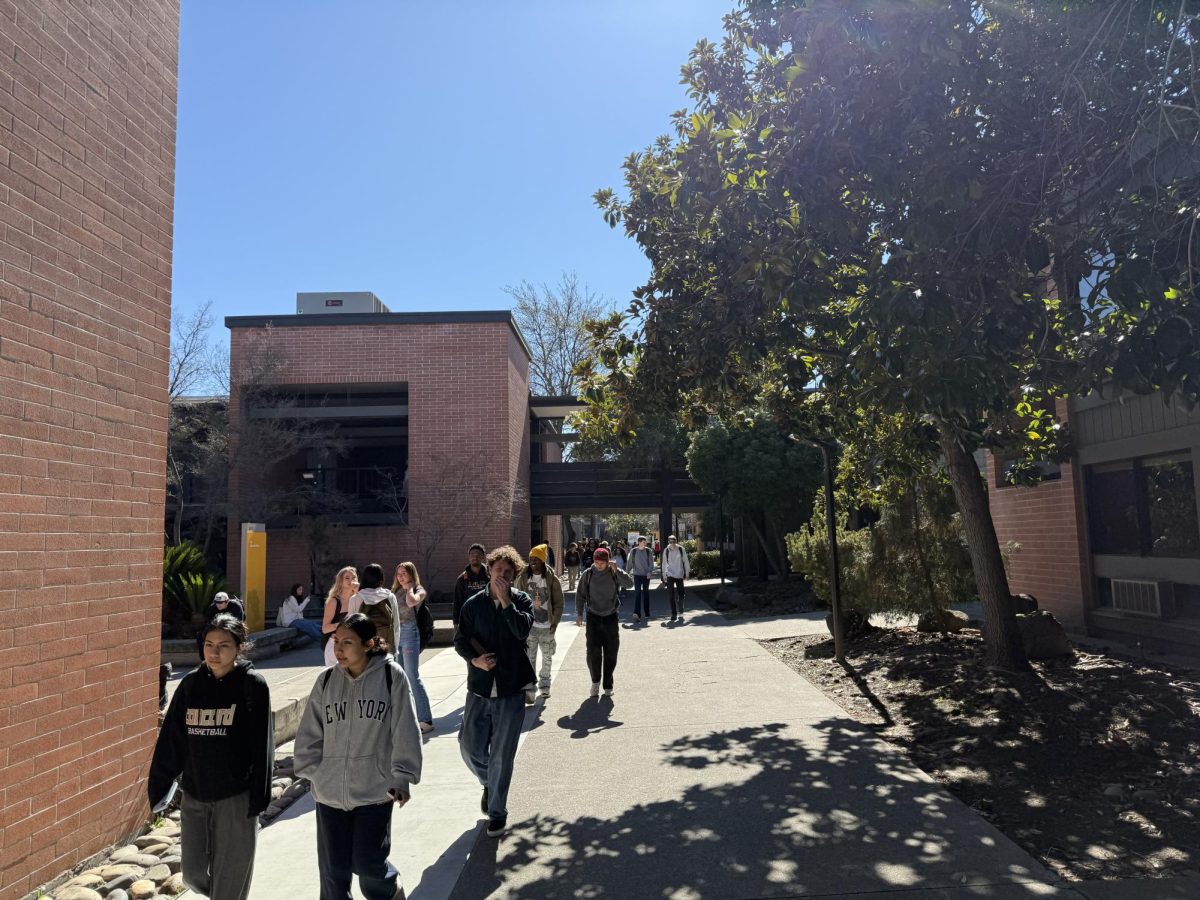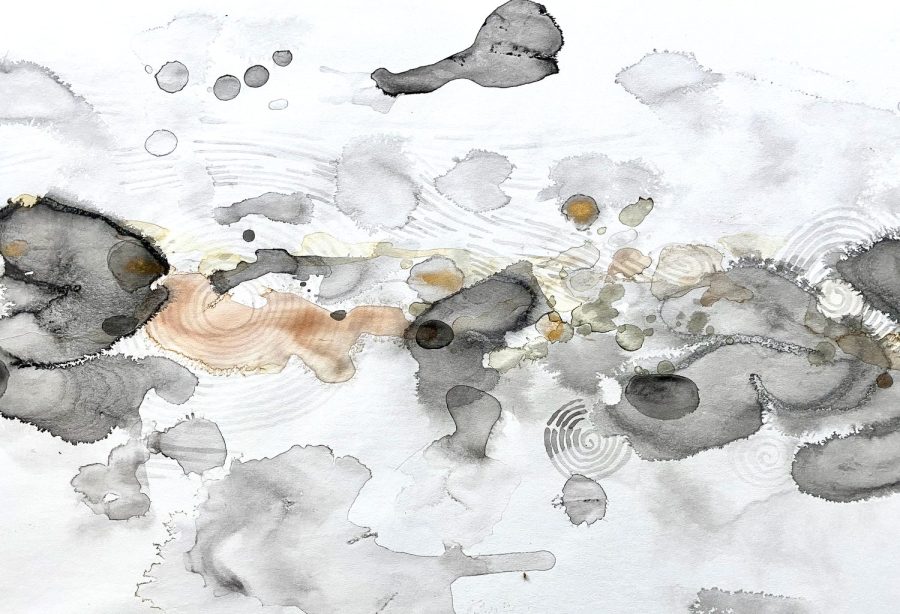DVC’s New Art Complex Opens with “Meditation” Exhibit by Japanese Artist Yoshikawa
As the soothing sounds of Japanese strings and voices wafted through the room, freshman Aaron Gomes strolled around the Diablo Valley College Art Building sharing his thoughts on the exhibit that recently opened there, called “Art As Meditation.”
“OMG slay, I like these—I want these in my house,” Gomes said, gesturing at a collection of pieces on the wall. “Something about the blue is ethereal, like the silver mist from those Disney tinkerbell fairies, you know?”
The month-long show, which opened Oct. 10 and features the works of Japanese artist Fumiyo Yoshikawa, is the first exhibit showcasing DVC’s new arts complex, located between the Performing Arts Center and Kinesiology buildings. Art professor and gallery coordinator Arthur King will host the closing reception, which includes a demonstration by Yoshikawa, on Nov. 10 from 11 a.m. to 12:30 p.m.
As the show’s title indicates, Yoshikawa’s work emphasizes the importance of a calm interior world—both for the artist and the viewer.
“My art is very meditative,” Yoshikawa told The Inquirer in an interview. “I used to make art for my meditations, and now I want to share the meditations and art-making. After meditating and making art, I feel good and peaceful. I want to share this peaceful state of mind.”
She added, “If somebody is kind to me, my heart is warm, and I want to do something good for somebody else. I want to have a warm heart and share it, so others can share their happiness with others. That kind of spreading of sincere heart is why I like to make my art, and I hope that the warmness spreads.”
Yoshikawa didn’t attend art school, which was too costly for her at the time, and instead studied education at Kyoto University. She said she learned a lot from her teachers as well as her peers, and after graduating she traveled around the world gaining exposure to many cultures, including the Mayan culture of Central America.
“Only [living] in the East Bay or Bay Area, you can still learn about a lot of different cultures—but traveling, you go there, you live with people there, in their circumstance and environment. It’s very different,” she said.
“Their economy is different, houses are different, food is different. I was so influenced by local people and [my] interactions with them.”
Particularly, Yoshikawa said she “felt a lot of similarities between the decorations and arts in Central America, [by] Native Americans, and Asian—specifically Japanese—culture.”
“Learning from different people on the street is a very good education. School is not the only place to learn,” she added. “You can go to museums, galleries, open studios—you learn so much just by talking with individual artists.”
Yoshikawa paints in sume, or layers, instead of painting one time through. “I wait until it completely dries, then make another layer. It looks simple, but the structuring takes a lot of strategy and planning,” she said.
She said she likes using pigments found in Japanese traditional paintings, as well as grinding minerals and different ingredients including coral, plants, insects, dyes and oyster shells. Yoshikawa employs nikawa, or Japanese painting binder, in her work.
In one show, she covered the floor in mud and chunks of coal taken from Coal Creek in Wyoming, where she did a residence program.
Yoshikawa said her style was influenced by “a little bit of everything,” including her original teacher, Ikeda Yoson, who was a student of Takeuchi Seihou, an influential artist in Kyoto—a city that, along with Tokyo, represents the center of Japanese traditional art.
Inaugurating a new space
During Yoshikawa’s show, Prof. King took time to talk about some of the standout features of the school’s new arts complex, which opened this semester after several years of construction.
In particular, he said, “The windows look into the space, which both allows people coming into the building to see inside and also allows for excellent light within the space.”
The new gallery also features “moveable walls,” which allow the space to be divided up for different shows, “giving our viewers a new experience every time they come in,” King said.
Additionally, within the arts complex, “some of the classrooms feature entire walls that are whiteboard, from top to bottom, [so] students can expect to see and create artwork literally on the walls with whiteboard markers,” he added.
Whereas the school’s old art gallery space was a windowless, somewhat hidden third floor room that often failed to get large turnouts for shows, “we have a really beautiful new space that can accommodate this new participation,” King said. As a result, the art department is reaching out to local middle and high schools and inviting them to attend—and even put on—exhibits.
King offered a message not only to art majors but all students at DVC, saying: “If you’ve ever thought about taking an art class, now’s the time to do it. We have brand new facilities—new space, new equipment—and I have to say I am very proud of this space and all the time and resources spent executing this.”
He added, “It is truly a dream come true for the college. It’s something to be proud of.”









































































